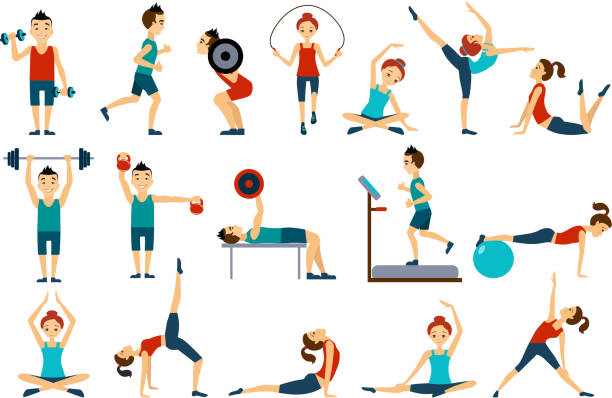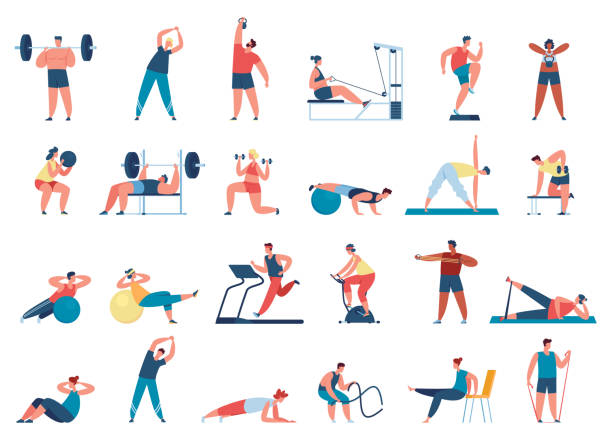Cardio vs. Weightlifting: Which One Should You Choose?
If you’ve ever wondered, “Should I do cardio or lift weights?”—you’re definitely not alone. Many people ask this question when trying to lose weight, gain muscle, or improve overall health. The truth is, both forms of exercise offer unique benefits. In this guide, we’ll explore what cardio and weightlifting each bring to the table, compare how they affect your body, and help you decide which one fits your fitness goals best.

What Is Cardio?
Cardio, short for cardiovascular exercise, includes any activity that gets your heart rate up. It’s also known as aerobic exercise. Cardio helps strengthen your heart, lungs, and blood vessels. This type of exercise improves how your body uses oxygen and boosts your overall endurance. Walking, running, biking, and swimming are all popular forms of cardio.
Common Types of Cardio:
- Running or jogging
- Cycling
- Swimming
- Jump rope
- Brisk walking
- Dancing
- Rowing
Key Benefits of Cardio:
- Burns calories and fat
- Improves heart health
- Boosts endurance and stamina
- Helps lower blood pressure and cholesterol
- Reduces stress and anxiety
According to the American Heart Association, adults should get at least 150 minutes of moderate cardio per week.

What Is Weightlifting?
Weightlifting, also known as strength training or resistance training, involves using weights or resistance to make your muscles work harder. This type of exercise helps build muscle strength, boost endurance, and improve overall body tone. It can include free weights, machines, or bodyweight exercises like push-ups and squats.
Popular Types of Weightlifting:
- Free weights (dumbbells, barbells)
- Machines
- Resistance bands
- Bodyweight exercises (push-ups, squats)
Key Benefits of Weightlifting:
- Builds muscle and strength
- Increases metabolism
- Improves bone health
- Enhances posture and balance
- Aids long-term fat loss
The CDC recommends strength training at least two days a week for all major muscle groups.
Cardio vs. Weightlifting: The Main Differences
| Feature | Cardio | Weightlifting |
|---|---|---|
| Calories Burned | High (during the workout) | Moderate (but boosts metabolism) |
| Muscle Gain | Minimal | Significant |
| Heart Health | Excellent | Good |
| Fat Loss | Fast, short-term | Slower, more sustainable |
| Bone Strength | Moderate | High |
| Mood Boost | Immediate endorphin boost | Gradual confidence build |
Which Burns More Calories?
If you’re trying to burn calories fast, cardio usually wins. A 155-pound person burns about:
- 260 calories in 30 minutes of brisk walking
- 295 calories in 30 minutes of weightlifting
- 372 calories in 30 minutes of jogging
(Source: Harvard Health Publishing)
Here’s the surprising part: weightlifting can boost your metabolism even after you finish working out. This effect, known as the “afterburn,” means your body keeps burning calories while you rest. The more muscle you build, the more calories you burn throughout the day—even when you’re not moving.
Which Is Better for Fat Loss?
Both cardio and weightlifting play an important role in your fitness journey. Cardio helps you burn fat quickly, while weightlifting helps you keep it off. That’s because muscle burns more calories than fat—even when you’re resting. More muscle means a faster metabolism.
If you’re aiming for long-term fat loss:
- Combine cardio with strength training for the best results.
- Focus on full-body workouts to build strength and burn more calories.
- Don’t forget about nutrition—eating healthy is just as important as exercising.
Which Is Better for Building Muscle?
When it comes to building muscle, weightlifting is the clear winner. Lifting weights does a few key things:
- It creates tiny tears in your muscle fibers (which is a good thing).
- It tells your body to repair and grow those muscles stronger.
- It helps you build lean muscle mass over time.
Cardio, on the other hand, doesn’t do much for muscle growth. In fact, doing too much cardio—especially without enough fuel from food—can actually make it harder to gain muscle.
Which Is Better for Your Heart?
Cardio is one of the best exercises for your heart. It:
- Boosts blood circulation
- Lowers your resting heart rate
- Reduces the risk of heart disease
But weightlifting also plays a role in heart health. Research shows that lifting weights can:
- Help lower blood pressure
- Improve cholesterol levels
- Support overall heart function
For the best heart health, combine both cardio and strength training in your weekly routine.
Which Is Best for Mental Health?
Both cardio and weightlifting offer powerful benefits for your mind.
Cardio is especially helpful for reducing anxiety and depression. It boosts the production of endorphins and serotonin, which are chemicals that improve your mood. Many people experience a “runner’s high” or a sense of happiness after a good cardio workout.
Weightlifting also benefits your mental health. It helps build self-confidence, reduce stress, and manage anxiety over time. The progress you make with each weight lifted provides a sense of accomplishment and control, which can have lasting positive effects on your mindset.
How to Choose Based on Your Goals
Let’s take a look at how to match your specific fitness goals with the right workout for you. Whether you’re aiming to lose weight, build muscle, or improve your overall health, choosing the right exercise routine can make all the difference.
1. To Lose Weight Fast
- For fast weight loss, focus on cardio exercises like HIIT (High-Intensity Interval Training), jogging, or cycling. These activities help you burn calories quickly and improve cardiovascular health.
- In addition, add weightlifting 2–3 times a week to preserve and build lean muscle. Keeping your muscle mass is key to maintaining a higher metabolism, which can help you continue to burn calories even when you’re not exercising.
2. To Build Muscle
- Weightlifting is the key to building muscle. Aim for 3–5 sessions per week, focusing on different muscle groups each time. This will help you gain strength and increase muscle mass effectively.
- Keep cardio sessions light, around 20–30 minutes, 2–3 times per week. Cardio is important for heart health, but too much can interfere with muscle growth. The goal is to find the right balance between building muscle and maintaining overall fitness.
3. To Improve Overall Health
- The best way to boost your overall health is to combine both cardio and strength training. This balanced approach supports your heart, muscles, and mental well-being.
- Try to get at least 150 minutes of moderate cardio each week—like walking, swimming, or biking. Also, include 2–3 strength training sessions to build and maintain muscle, support bone health, and keep your metabolism strong.
4. To Boost Endurance
- If your goal is to increase stamina, make cardio your main focus. Activities like running, swimming, and cycling help improve lung capacity, heart strength, and energy levels over time.
- Add resistance training to your routine 2–3 times a week. Strength exercises support joint health, build stability, and help prevent injuries, especially as your cardio workouts get longer or more intense.
Can You Do Both?
Absolutely! You don’t have to choose between cardio and weightlifting—you can do both. In fact, many fitness experts recommend it. This approach is known as concurrent training, and it offers the best of both worlds: heart health, fat loss, and muscle gain all in one routine.
How to Combine Cardio and Weightlifting:
- Do cardio and weights on alternate days
- Or, lift weights first and do cardio after (if same day)
- Keep workouts under 60–75 minutes to avoid burnout
A balanced routine might look like this:
| Day | Workout |
|---|---|
| Mon | Upper-body weightlifting |
| Tue | 30-minute cardio |
| Wed | Lower-body weightlifting |
| Thu | Rest or yoga |
| Fri | Full-body strength + light cardio |
| Sat | HIIT or steady-state cardio |
| Sun | Rest or walk outdoors |
Myths About Cardio and Weightlifting
Let’s clear up some common myths:
- “Cardio is better for fat loss.” Not always. While cardio burns calories fast, strength training boosts your metabolism and helps you burn more calories over time—even at rest.
- “Lifting weights makes women bulky.” This isn’t true. Building large muscles takes a lot of time, effort, and specific nutrition. Most women gain lean, toned muscle.
- “You don’t need strength training if you run.” You still do! Strength training helps protect your joints, improves running form, and lowers your risk of injury.
- “Doing both is bad.” It’s only a problem if you overtrain. With proper rest and a healthy diet, combining cardio and weights can be one of the most effective ways to reach your goals.

Final Thoughts: Cardio vs. Weightlifting — Why Not Both?
So, Which One Is Best for You?
The best workout depends on your personal fitness goals. Cardio is great for your heart, lungs, and burning calories quickly. Weightlifting helps you build strength, grow muscle, and support long-term fat loss.
In most cases, the best plan is to combine both. This way, you get the full range of benefits—from a strong heart and toned muscles to better energy and overall health.
Your routine may focus more on cardio or weightlifting, depending on what you want to achieve. But by including both, you create a balanced fitness plan that works for your whole body.
Ready to Build Your Best Workout Plan?
Whether you’re just starting or want to level up your fitness, take the first step today. Try a mix of cardio and strength training this week—and see how your body responds.
What are your fitness goals right now?
Do you prefer cardio or lifting weights?
👉 Share your thoughts in the comments below!
Let’s help each other find the right balance.

